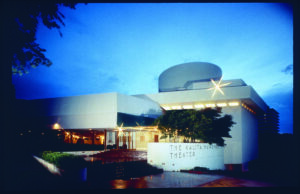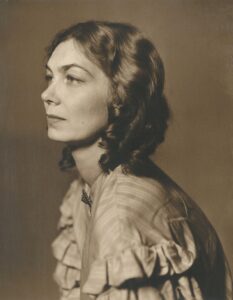By Shari Goldstein Stern
Dallas in 1959 was a progressive, flourishing metropolitan city, with a burgeoning downtown skyline, handsome suburbs, super-power businesses like Texas Instruments and buildings by some of the most internationally respected architects.
The fine architectural tradition had grown measurably with the Texas Centennial in 1936 at the State Fair of Texas. The Fair’s Deco and Spanish-style architectural buildings were already city treasures. Since then, countless talented architects have left their mark on the Dallas landscape, like Philip Johnson (Thanks-Giving Square), I.M. Pei (Dallas City Hall, Morton Meyerson, etc.) and Spanish architect Santiago Calatrava (Margaret Hunt Hill Bridge, Margaret McDermott Bridge and The Wave at Southern Methodist University).

Photo courtesy of Dallas Theater Center/Elle Studios
When it opened in 1959, Southland Center (Southland Life Insurance Company and the Sheraton Dallas hotel, formerly Adams Mark Hotel) was known as the tallest building west of the Mississippi. That same year, the Dallas Theater Center (DTC) raised its curtain on the stage of Kalita Humphreys Theater (Kalita) in Turtle Creek, designed by Internationally renowned architect Frank Lloyd Wright. The theater was designated a Dallas Historical Landmark in 2007.
In the mid-1950s, Dallas civic leaders hired artistic director Paul Baker and architect Frank Lloyd Wright to design a theater to serve as DTC’s home. Construction began in 1955 and was completed four years later. Kalita is the only remaining professional theater Wright personally designed, and one of the last structures he developed. The architect passed away nine months after Kalita’s completion, and only six months before the theater’s grand opening.
Artistic Director Paul Baker, who worked tirelessly with Wright on the building’s plans, founded DTC in 1959, concurrent with the theater’s opening. In 1984, Baker’s daughter, Robyn Baker Flatt, co-founded Dallas Children’s Theater.
A young actress from Liberty, Texas, found her way into one of Baker’s productions. After graduating in theater arts from Vassar, she made her Dallas debut in 1935. Before working with Baker, she worked in Dallas with Charles Meredith and the Dallas Little Theater, and as the director of the Dallas Federal Theater Project. She was Kalita Humphreys (pictured below), whose name has proudly branded the theater since 1959. Humphreys had perished, along with her husband, Joseph Kline Humphreys, in a plane crash in 1954. She was 40 yrs. old.

A few years later, Humphreys’ parents, Robert Wade Humphreys and Geraldine Camilla Hardin Davis Humphreys, donated $120,000 to the future theater as a memorial to their daughter, Kalita, for her theatrical history with Baker.
Kalita opened on December 27, 1959, with a performance of “Of Time and the River” by Thomas Wolfe. The production earned a resounding four standing ovations from its 497 seats.
Baker was artistic director of DTC from its inception in 1959. During his tenure, DTC became one of the nation’s leading producers of experimental interpretations of classics and world premieres, with 35 plays premiering on the Kalita stage during his time.
In September 2007, Kevin Moriarty joined DTC at Kalita as the organization’s sixth artistic director, programming his first season in 2008-09. In the fall of 2009, he created the Diane and Hal Brierley Resident Acting Company. In 2017, DTC earned the Tony Award for Best Regional Theater, with Moriarty as its steward. It was Moriarty who faced the daunting challenge of moving DTC out of Kalita and into its new home, the Charles and Dee Wyly Theater, in the AT&T Performing Arts Center. “A year later, in the fall of 2009,” he continued, “I was fortunate to direct the first production at the Wyly, ‘A Midsummer Night’s Dream.’ In the decade since then, I have loved the many opportunities I’ve had to direct in the Wyly. Creating art in each of these one-of-a-kind theater buildings is one of the great joys of serving as DTC’s artistic director.”
Between Wyly and Kalita Humphreys Theaters combined, DTC productions play for 90,000 audience members each year. According to Moriarty: “As our need to expand our programming is likely to increase in the future, we are currently working with the City of Dallas and a broad constituency of community members to create a Master Plan for the future of the [Kalita] campus. We have hired the world-renowned architects, Diller Scofido + Renfro to lead a team of experts in creating the plan, which is entirely funded by Dallas Theater Center.”
While the COVID-19 virus has kept the world under quarantine since March 2020, the creative theater is using technology to substitute streaming productions to fill the gap.
